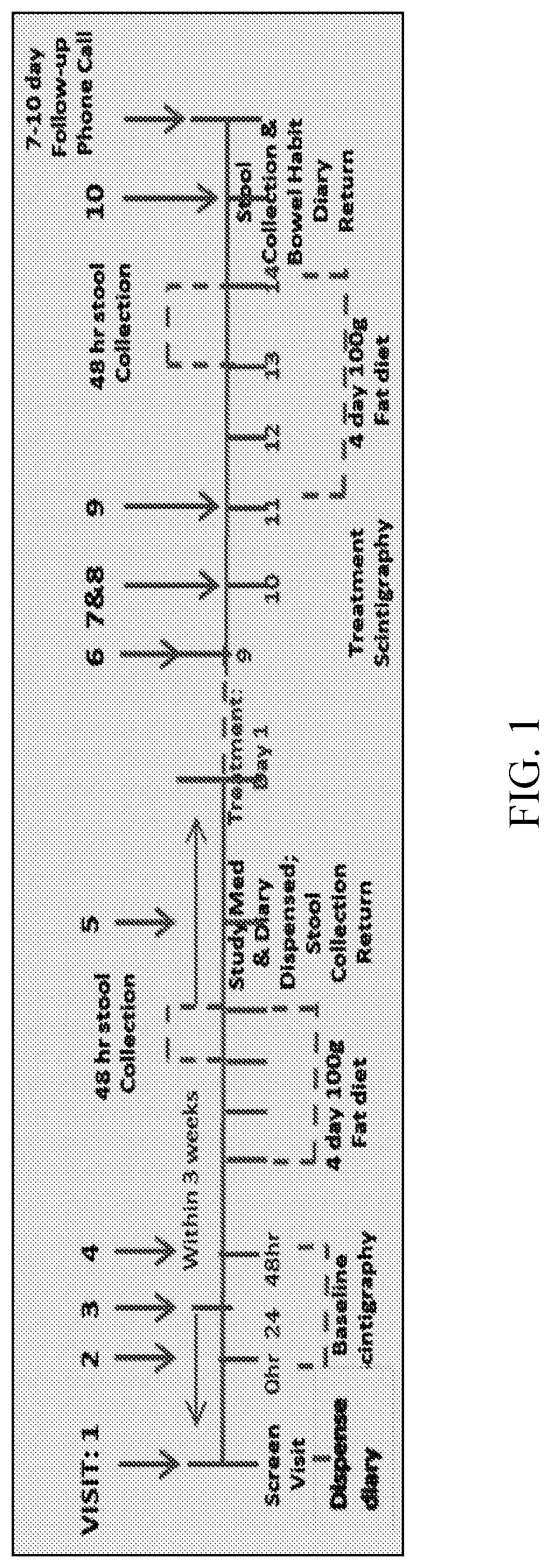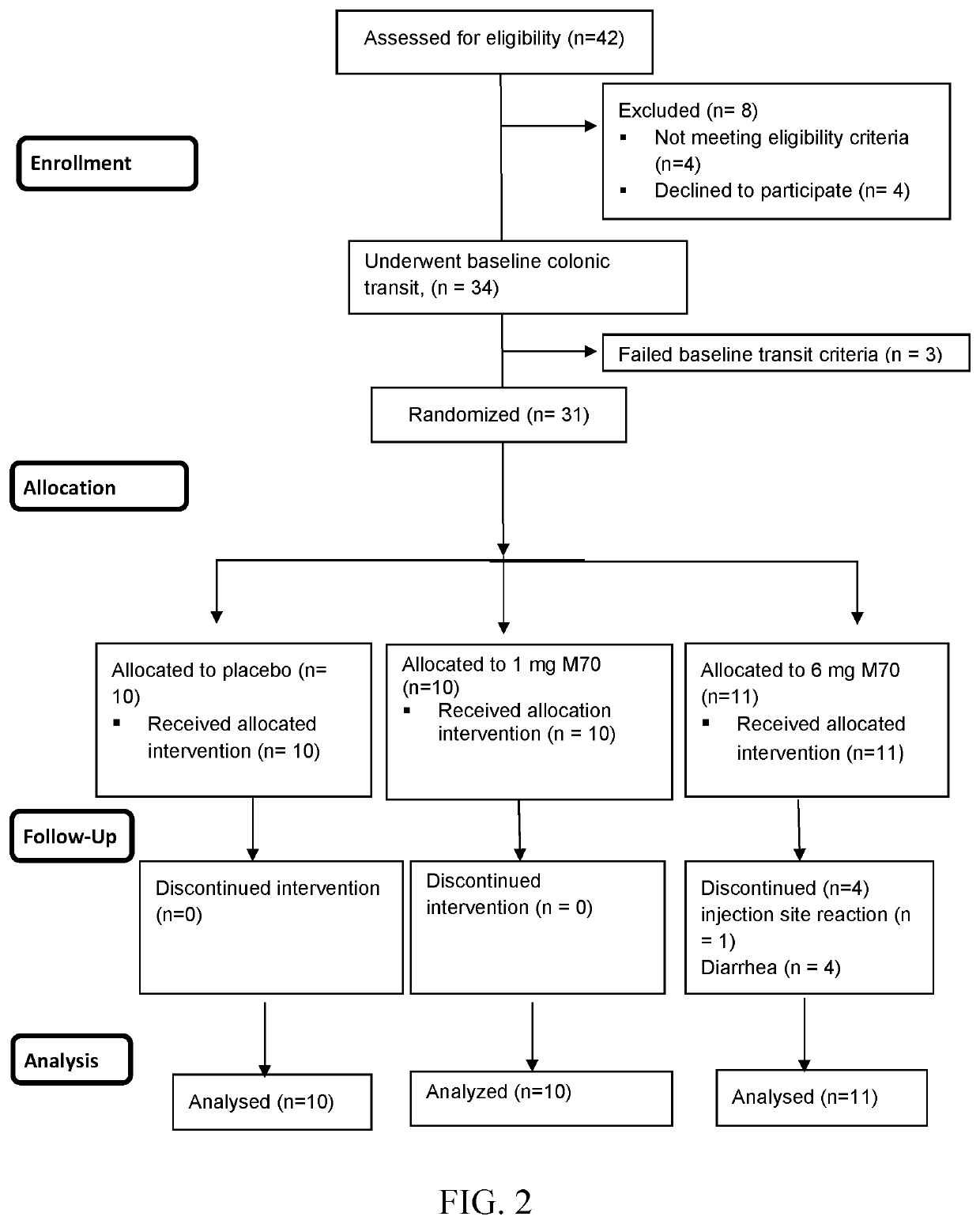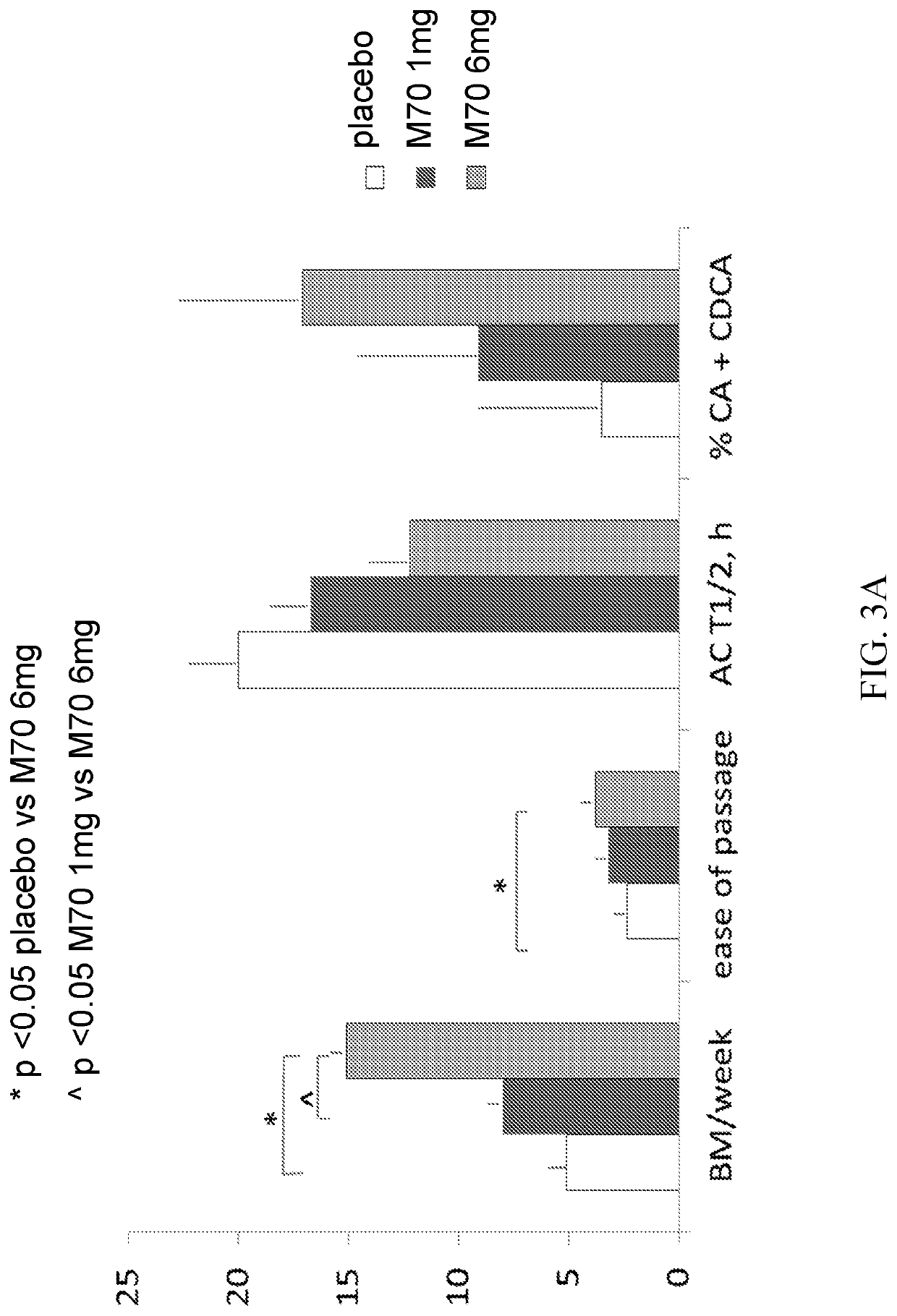Methods of treating gastrointestinal motility-related disorders using variants and fusions of fgf19/fgf21 polypeptides
a technology of gastrointestinal motility and polypeptides, which is applied in the direction of peptides, drug compositions, peptides/protein ingredients, etc., can solve the problems of large economic burden in the united states and other countries, methods to treat or prevent gastrointestinal motility-related disorders, especially in patients with unknown causes, and unmet needs
- Summary
- Abstract
- Description
- Claims
- Application Information
AI Technical Summary
Benefits of technology
Problems solved by technology
Method used
Image
Examples
example 1
[0417]This example describes a Phase 1B, two-dose, placebo controlled, randomized double-blind study clinical study to evaluate the effects of M70 on colonic transit, stool frequency and consistency, fecal fat and bile acids (serum and fecal) in patients with functional constipation (“FC”), and shows the role of M70 in treating FC in human patients.
[0418]Study Design and Statistical Analysis:
[0419]M70 is a non-tumorigenic engineered variant of human fibroblast growth factor 19 (FGF19), which has shown biologic activity in patients with diabetes and liver diseases (PBC, PSC and NASH). In patients with FC (Rome III criteria) and baseline Colonic Transit (“CT”) at 24 h<3.0, we conducted a 2-dose (1 and 6 mg SQ daily) M70 parallel group, placebo-controlled randomized double-blind study with treatment lasting 14 days and evaluated the effects on CT (primary endpoint), stool frequency and consistency (Bristol stool form scale (“BSFS”)), fecal fat and total and individual fecal bile acids ...
PUM
| Property | Measurement | Unit |
|---|---|---|
| molecular weights | aaaaa | aaaaa |
| molecular weights | aaaaa | aaaaa |
| molecular weights | aaaaa | aaaaa |
Abstract
Description
Claims
Application Information
 Login to View More
Login to View More - R&D
- Intellectual Property
- Life Sciences
- Materials
- Tech Scout
- Unparalleled Data Quality
- Higher Quality Content
- 60% Fewer Hallucinations
Browse by: Latest US Patents, China's latest patents, Technical Efficacy Thesaurus, Application Domain, Technology Topic, Popular Technical Reports.
© 2025 PatSnap. All rights reserved.Legal|Privacy policy|Modern Slavery Act Transparency Statement|Sitemap|About US| Contact US: help@patsnap.com



